How kitchens are being enlivened with colour, from romantic juniper tones to mustard and olive for the brave
When decorating kitchens, colour is now definitely on the menu, says Arabella Youens.
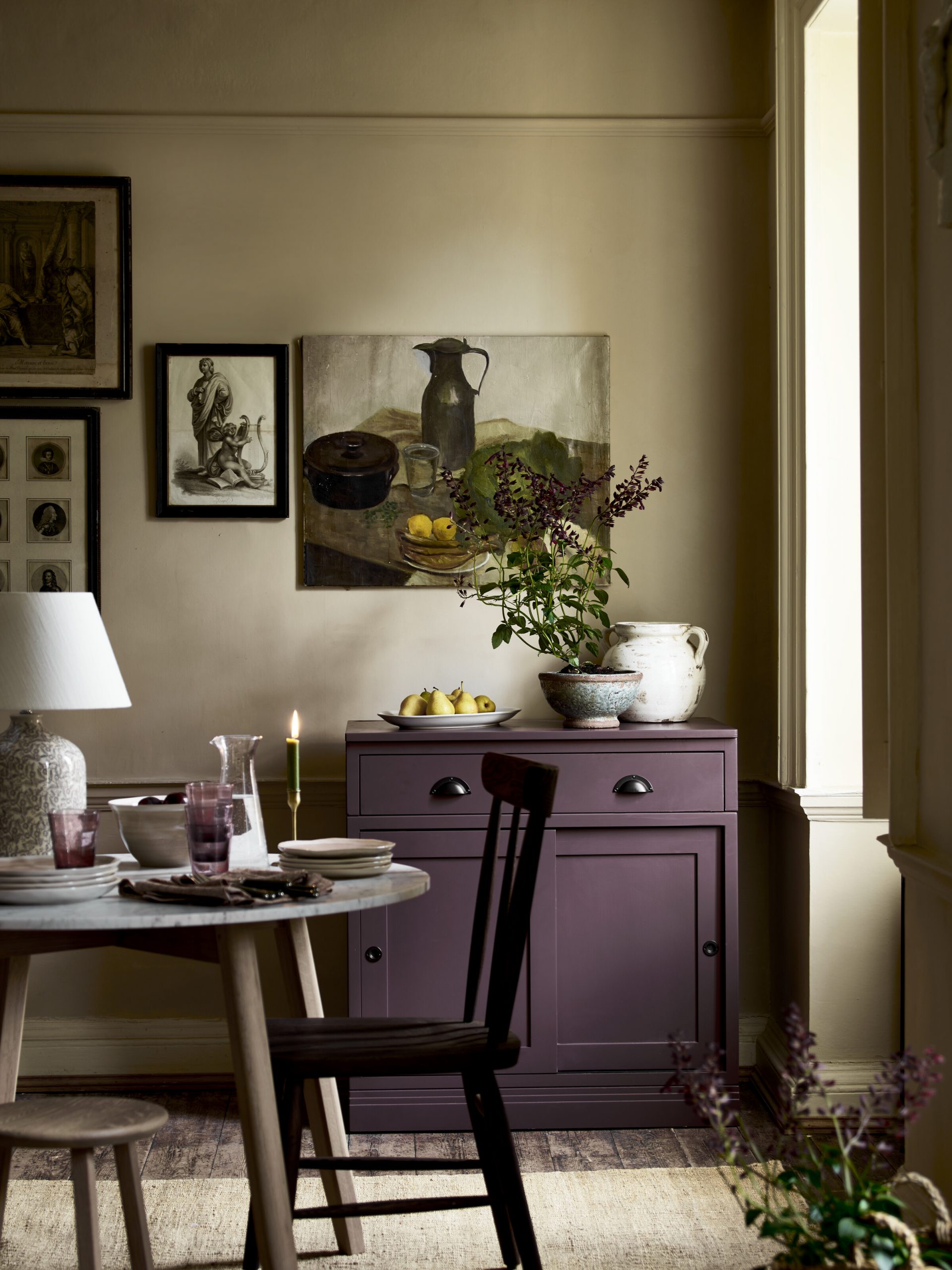

Traditionalists might baulk, but a variety of rich or vibrant hues are finding their way into kitchens. In country house kitchens of old, the emphasis was on the practical rather than decorative, says interior designer Edward Bulmer, who has worked on a number of Grade I-listed houses. ‘The kitchen at Burghley, Lincolnshire, with its painting of a butchered ox by Frans Snyders, was perhaps an exception,’ he adds. ‘In the main, the priorities were that materials were fireproof, serviceable, sturdy and washable.’
Mr Bulmer explains that painted cabinetry became a necessity when softwood timber was more commonly used in kitchens. A clear coating of linseed oil was required to protect the wood, but it tended to yellow over time.
‘Adding some pigment to the linseed became a well-trodden route,’ says Mr Bulmer, who is an expert in natural paint-making methods. ‘It was down to budget, of course; spaces that were largely used for servants wouldn’t be painted with expensive pigments. Hence the ubiquitous use of browns and off whites in kitchens.’
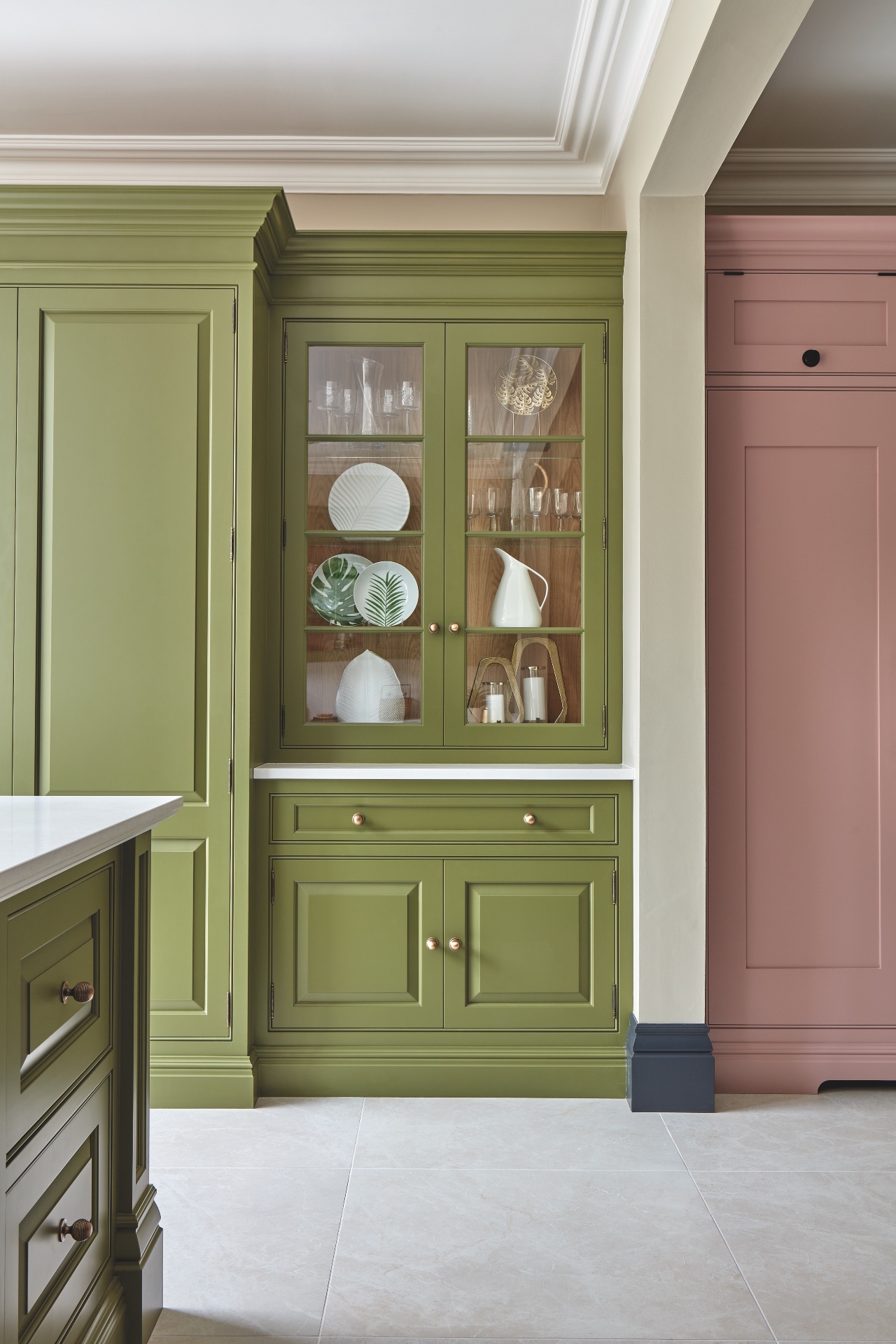
Increasingly, however, kitchens are being enlivened with colour, not only on cabinetry but appliances, too.
The Florentine manufacturer, Officine Gullo, finishes its units and appliances in a choice of colours ranging from zesty orange to baby pink (www.officinegullo.com). Everhot, the Cotswolds-based manufacturer of range cookers, offers models in vivid shades of teal, mustard and tangerine (www.everhot.co.uk).
Those who are nervous about embracing strong colours in a kitchen are opting to paint cabinets in one colour as another part takes a contrasting hue. This can either be done below and above the worktop or when kitchen islands are given a different treatment.
It’s a popular trend among the clients of Neptune. ‘The effect creates a calming atmosphere, with balance and contrast working together,’ says George Miller, one of its home designers. He suggests pitching its new Clove colour, a juniper-berry maroon, against a cool neutral. ‘Or it can also be paired with other statement shades, such as Mustard or even Olive for a touch of eccentricity.’
Sign up for the Country Life Newsletter
Exquisite houses, the beauty of Nature, and how to get the most from your life, straight to your inbox.
Over time, people have become more confident with colour, notes kitchen designer Tom Howley. ‘When I think back to earlier showrooms I designed, it was a timeless, neutral combination of colours. Fast forward to now, and our most recent showroom is a celebration of colour.’
Mr Howley’s clients are erring towards richer and bolder colours in their kitchens and pairing them with burnished brass hardware. ‘This helps to create a more unified space, particularly useful if you are zoning areas in an open-plan room.’

Another, more discreet way to introduce colour is to paint the interior of glazed cabinets. ‘This is a great way to link spaces and add a feature to an unassuming space,’ explains Mr Howley.
Although dark kitchen units always look elegant, ‘they can sometimes feel overwhelming if you have acres of cabinetry, so choosing a delicate neutral on the walls to act as a softer counterpoint is key,’ says Patrick O’Donnell, colour consultant at Farrow & Ball.
‘Studio Green units, for example, are made less weighty by introducing soft-nuanced white walls, taking away any heaviness of the fitted furniture.’
One of the main advantages of painted units is their versatility. ‘With careful prep work and the correct paint, quality furniture can be easily repainted to prolong its lifespan and introduce another colour combination,’ adds Mr Howley.
-
 Ford Focus ST: So long, and thanks for all the fun
Ford Focus ST: So long, and thanks for all the funFrom November, the Ford Focus will be no more. We say goodbye to the ultimate boy racer.
By Matthew MacConnell
-
 ‘If Portmeirion began life as an oddity, it has evolved into something of a phenomenon’: Celebrating a century of Britain’s most eccentric village
‘If Portmeirion began life as an oddity, it has evolved into something of a phenomenon’: Celebrating a century of Britain’s most eccentric villageA romantic experiment surrounded by the natural majesty of North Wales, Portmeirion began life as an oddity, but has evolved into an architectural phenomenon kept alive by dedication.
By Ben Lerwill
-
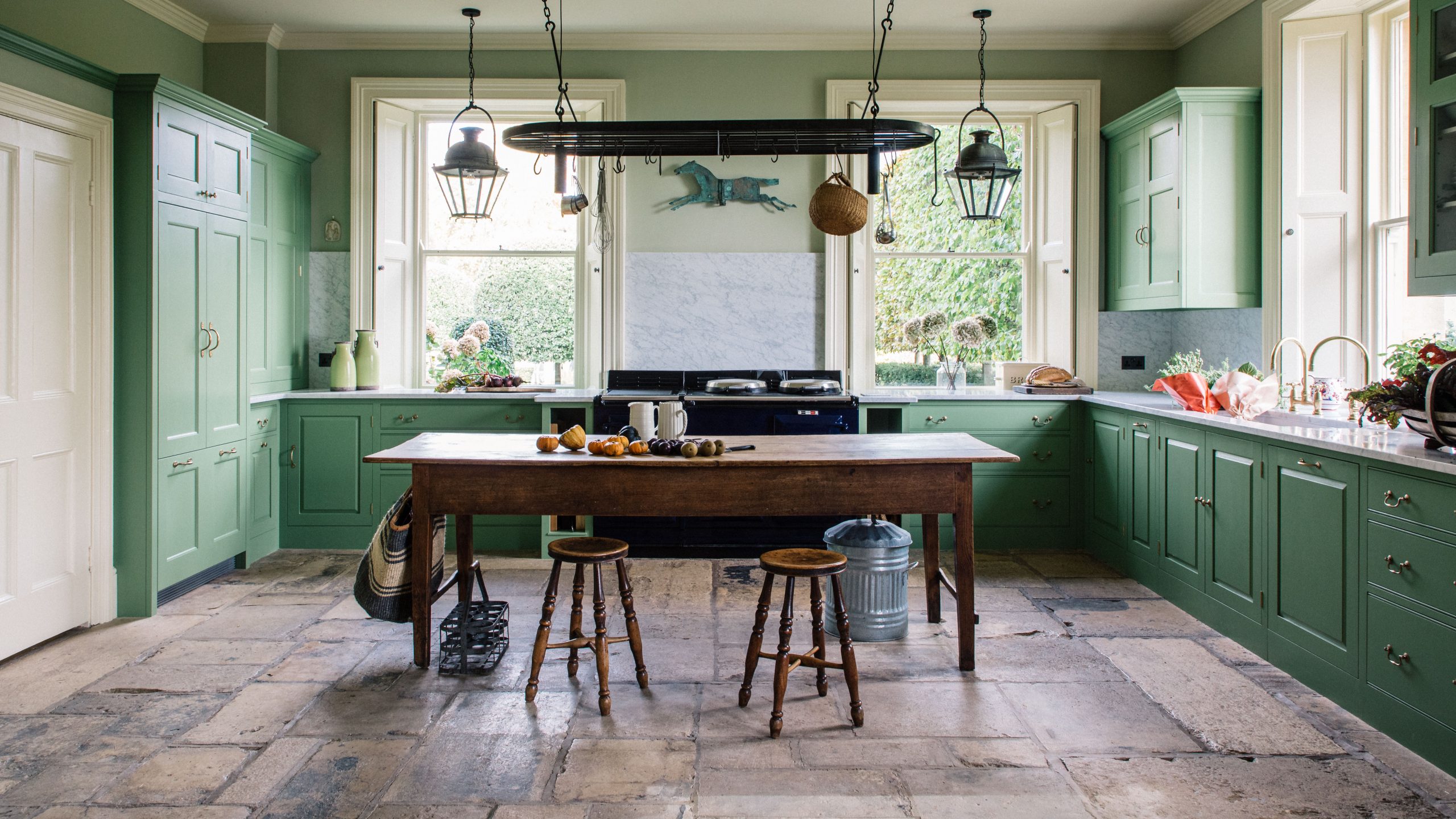 How to create a serene, yet hard-working kitchen
How to create a serene, yet hard-working kitchenPlain English worked with antique dealer Robert Young to make this traditional kitchen with an effortlessly relaxing colour scheme that marries perfectly with the views over beautiful gardens.
By Arabella Youens
-
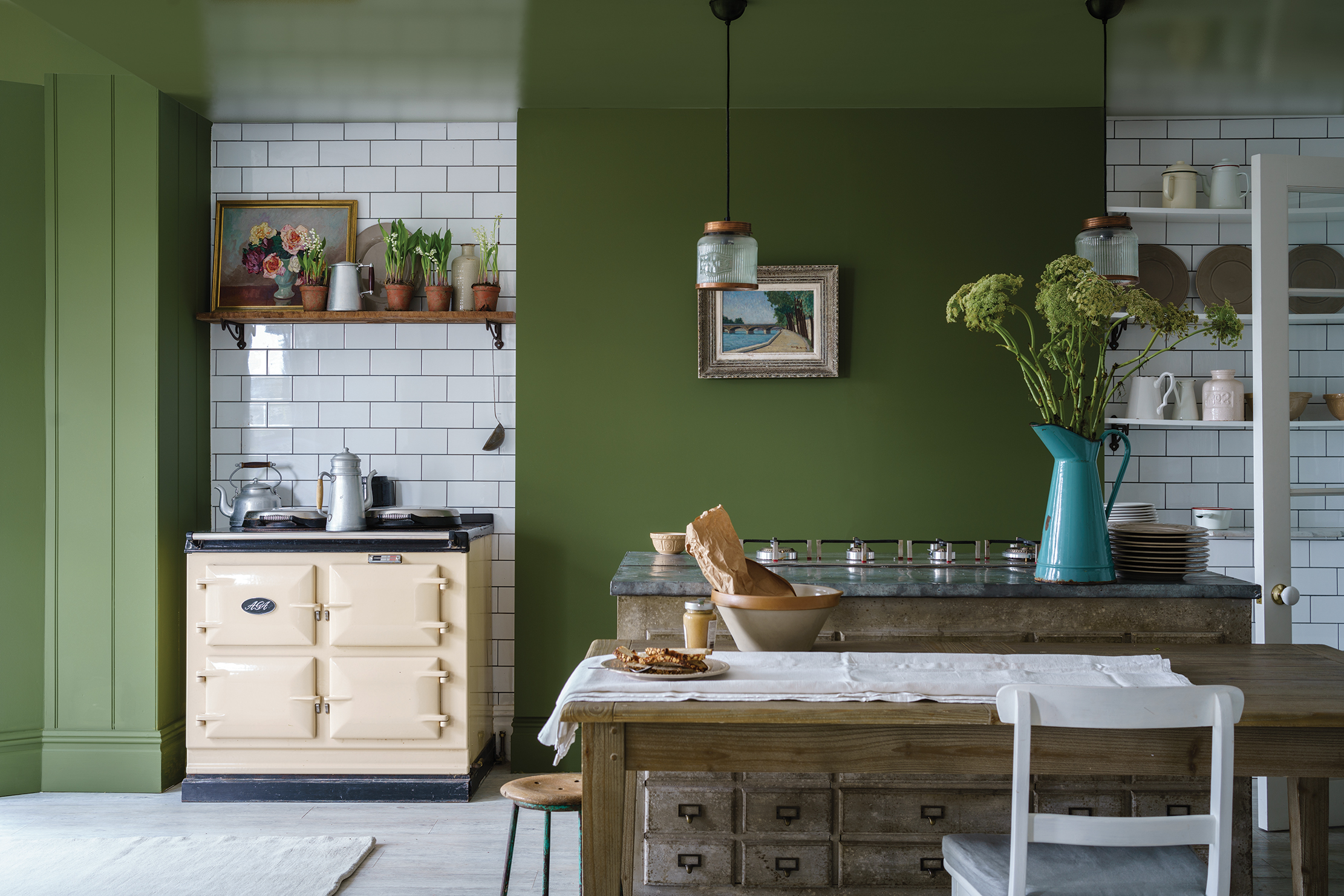 Why kitchens are going green — literally
Why kitchens are going green — literallyGreen is the perfect colour for a kitchen, says Amelia Thorpe.
By Amelia Thorpe
-
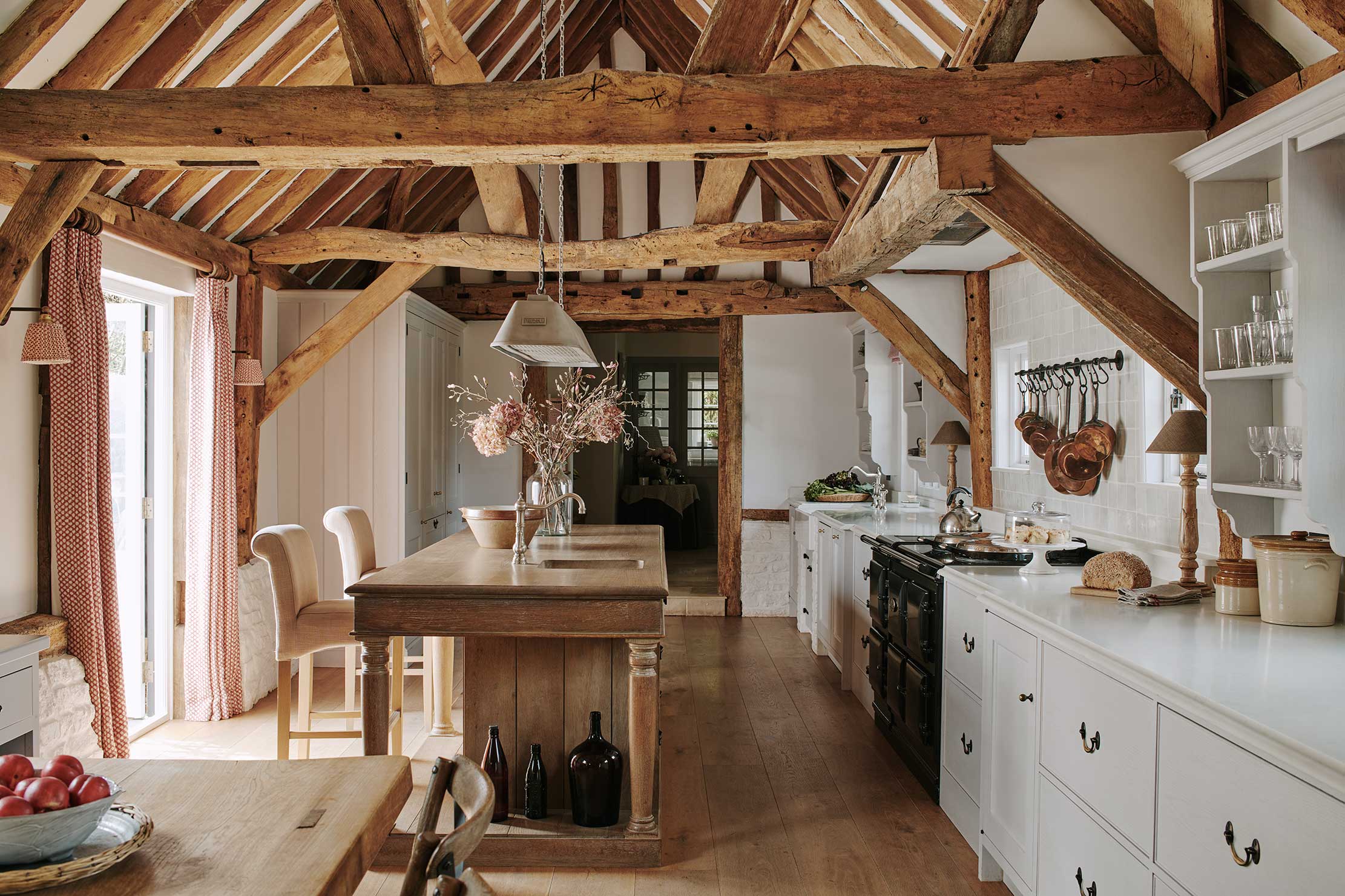 A modern kitchen perfectly framed by the exquisite ancient beams
A modern kitchen perfectly framed by the exquisite ancient beamsArtichoke designed a discreet and timeless kitchen to complement a converted granary. Amelia Thorpe takes a look.
By Amelia Thorpe
-
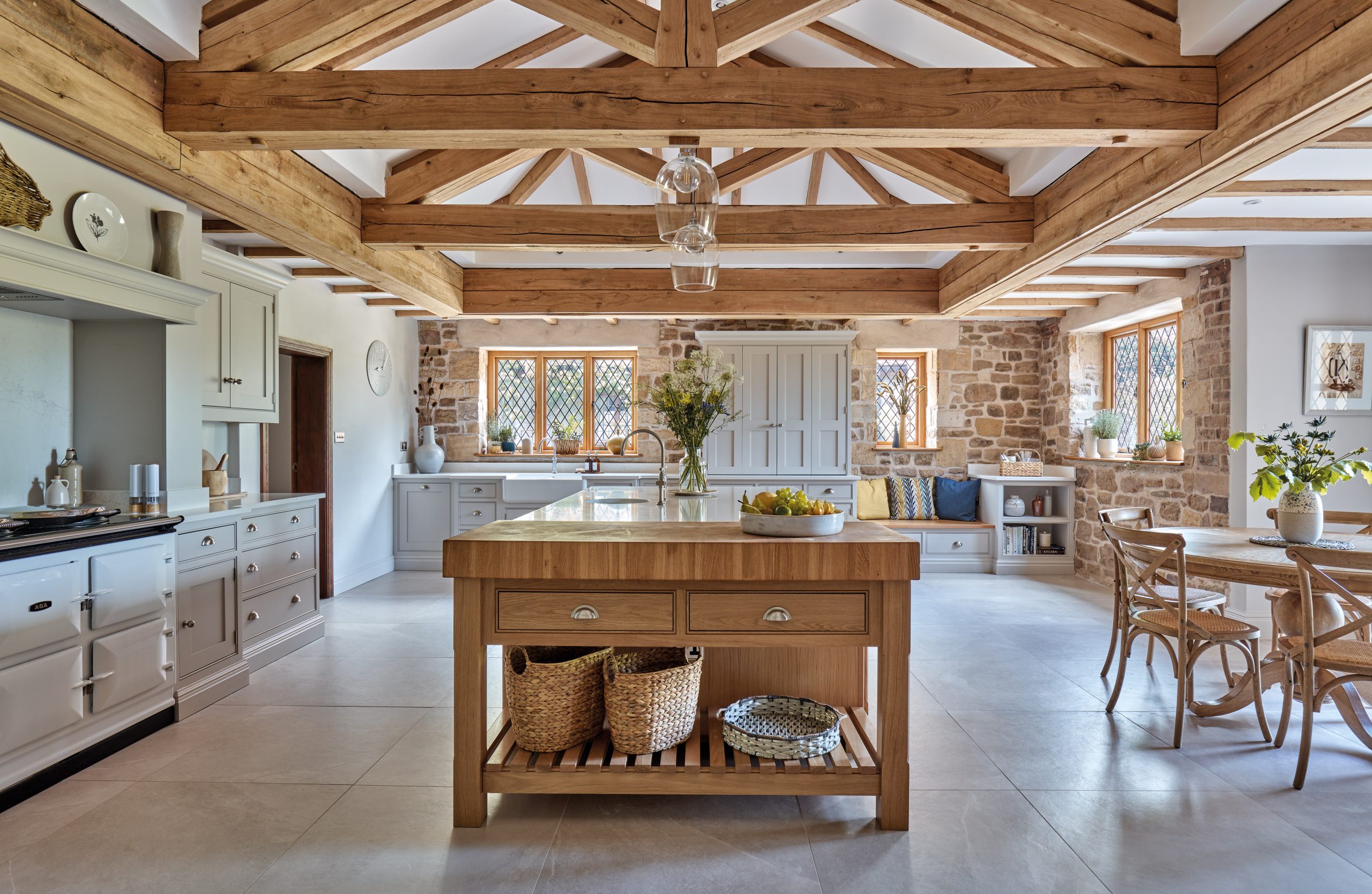 Yes, you can put a new kitchen in a Grade I-listed house — and this beautiful example shows how
Yes, you can put a new kitchen in a Grade I-listed house — and this beautiful example shows howTraditional cabinetry was a key ingredient in the sympathetic restoration of a Grade I-listed Tudor house in Shropshire.
By Arabella Youens
-
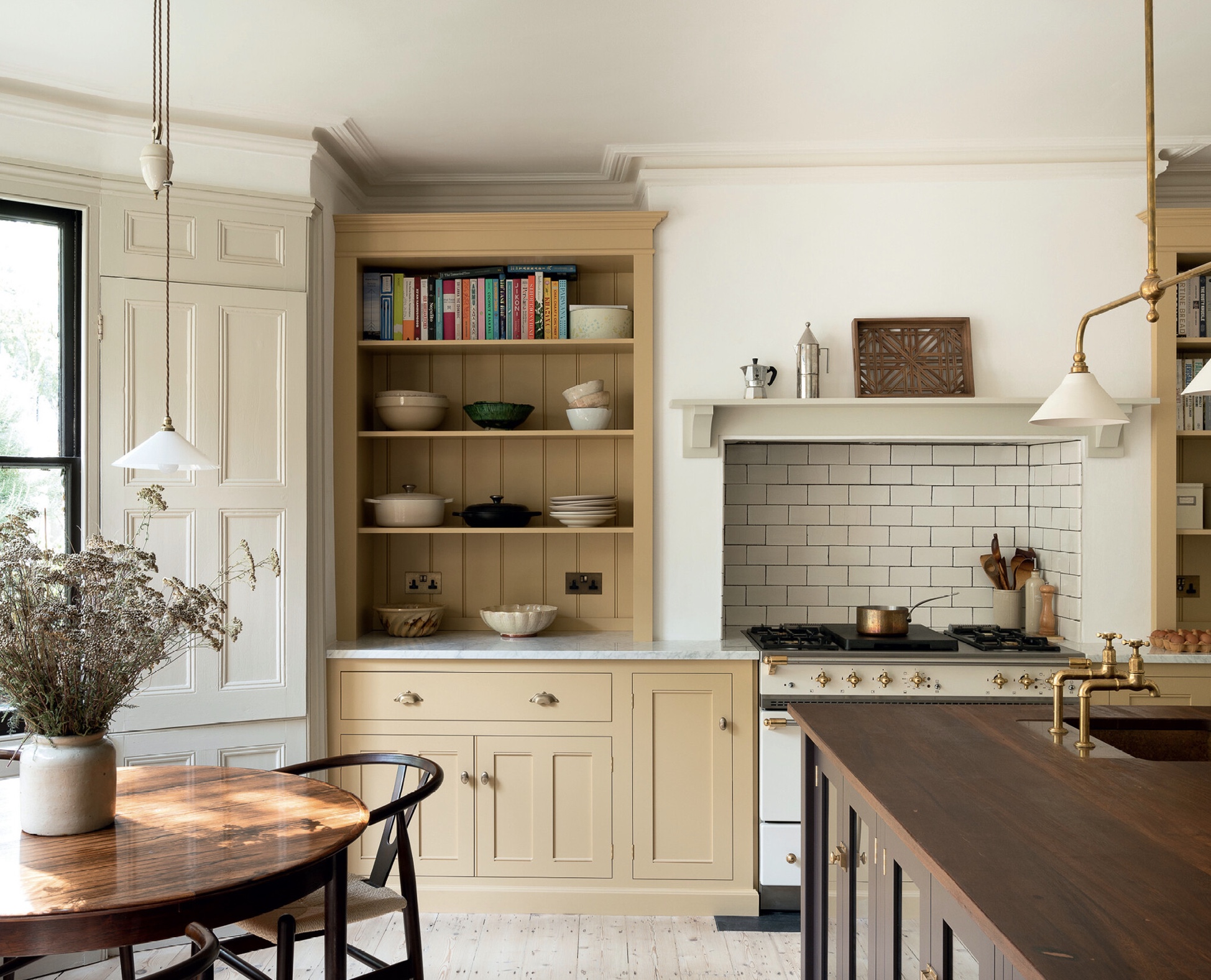 A London townhouse kitchen transformed to be sociable, practical and charming
A London townhouse kitchen transformed to be sociable, practical and charmingThe new owners of this London townhouse have reconfigured it to create a sociable space for cooking and entertaining.
By Arabella Youens
-
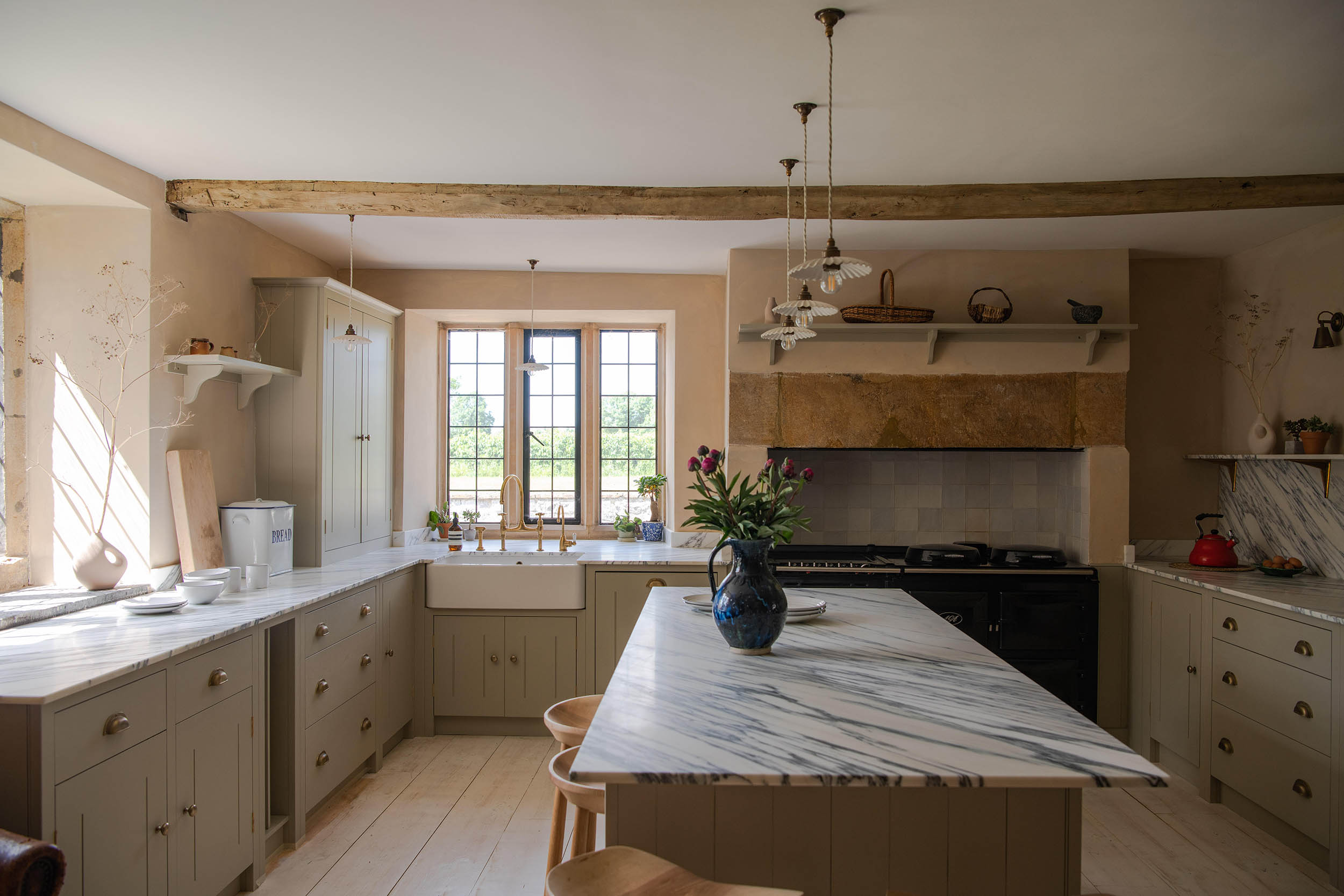 A beautiful new kitchen sympathetically created for a 16th century manor house
A beautiful new kitchen sympathetically created for a 16th century manor houseLimewash walls, a large island and plenty of open shelving combine to create a kitchen that’s sympathetic to this 16th-century manor house in Somerset.
By Arabella Youens
-
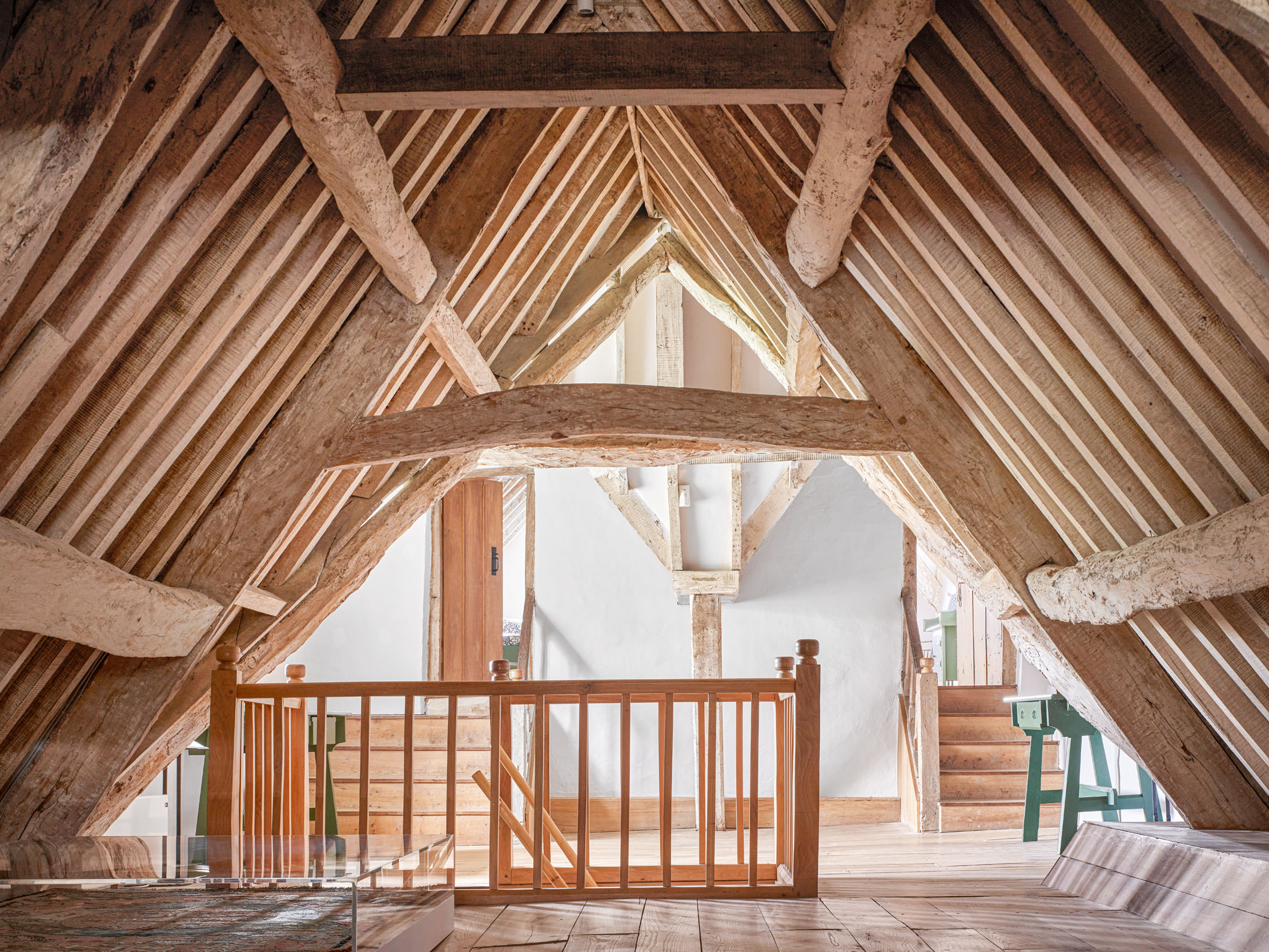 10 things I wish I'd known about doing up old houses before I started, by Country Life's interiors guru Giles Kime
10 things I wish I'd known about doing up old houses before I started, by Country Life's interiors guru Giles KimeCountry Life’s executive editor and resident interiors expert Giles Kime shares the lessons he’s learnt from the experience of dragging a succession of houses into the 21st-century.
By Giles Kime
-
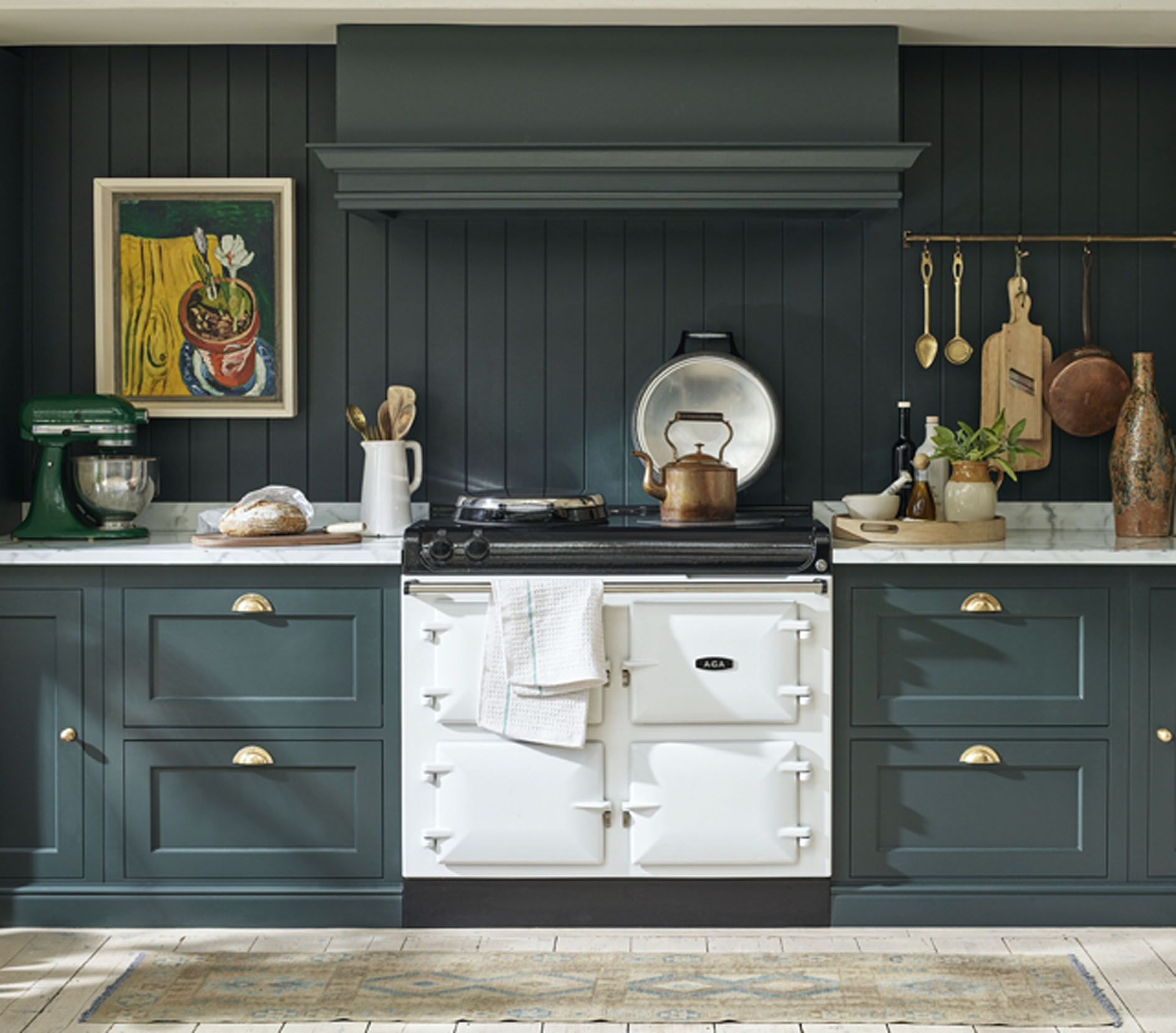 Seven beautiful new looks in kitchens, from classic cabinetry to 80s revival
Seven beautiful new looks in kitchens, from classic cabinetry to 80s revivalThe latest looks in the kitchen, selected by Amelia Thorpe.
By Amelia Thorpe